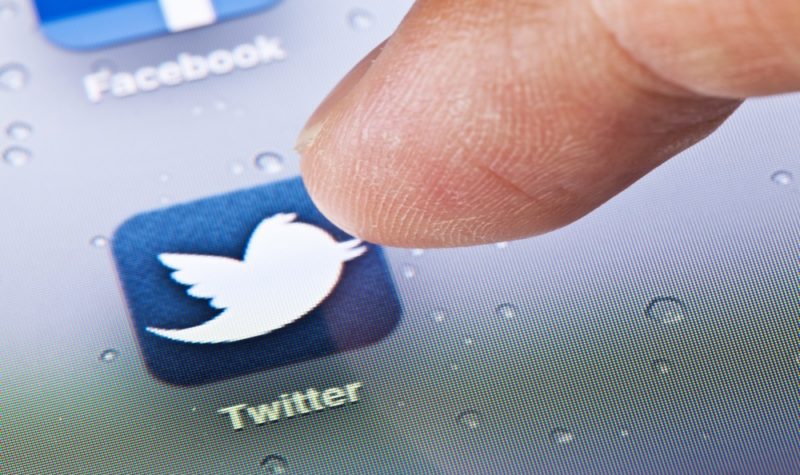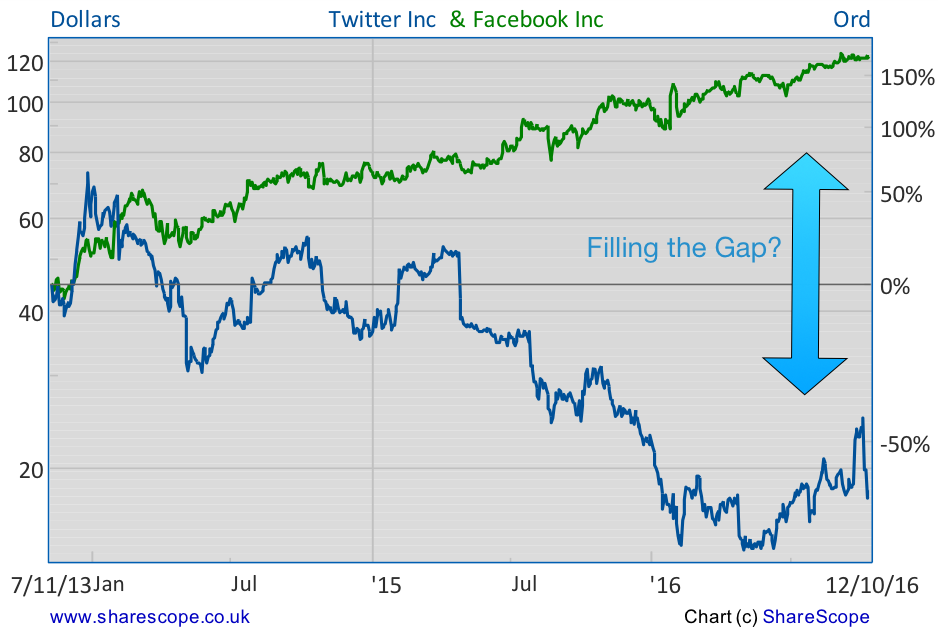Twitter shares are beginning to look attractive

Twitter may be worth a lot more than many believe. While Facebook, Instagram, Pinterest and SnapChat delight investors with their lunar reach, Twitter remains a forgotten power that no one is willing to buy. But that could be about to change.
“If it happens in the world, it happens on Twitter.” That’s probably the most notable slogan Twitter has ever used. It’s one that pinpoints its ascent as a power in live content streaming, turning the microblogging company into the Netflix of real-life events.
Three years after the IPO frenzy, and at a price 70% below its first day close, Twitter is finally at a point where it is worthy of serious consideration as a long-term investment. A low price, a more enlightened management team and the fact that the firm is approaching breakeven make the case for a favourable opinion of Twitter’s stock.
During the last few years, we have witnessed huge growth in the social media industry, to the extent that social media websites like Facebook now dominate the internet.
Facebook currently reports reaching 1.7 billion monthly active users. In a world with 7.4 billion people, where only 3.5 billion have internet access, Facebook’s reach is nothing less than stupendous, as it represents 50% of all internet users.
Instead of blogging at Blogspot and similar facilities, internet users directly stick their thoughts on a Facebook mural to reach family and friends. Companies still pay for internet domains and corporate websites, but the real game is now played within Facebook, where they can purchase a few thousand likes and interact with potential clients. Some prospective clients even go directly to Facebook’s search to reach a business, challenging Google’s position in the world of finding things and turning a Facebook’s presence a must.
But, while Facebook reaches 1.7 billion, it is made up of millions of small groups, with each user building its own closed network, which is usually populated with friends and family. The focus is not on personal interests but rather on friendship.
This represents a few issues for advertisers, as it is much more difficult to understand user preferences. In the end, ads become mostly irrelevant, which may dent Facebook’s profit in the future.
Another drawback comes from the fact that Facebook is highly vulnerable to privacy concerns. It is easy to end up mixing one’s private life with professional life, which may lead to problems.
As I read a few days ago, some millennials are now switching off of social media websites like Facebook, as there is a rising concern with privacy. In the future, more and more people will become less likely to provide their own private information in the way Facebook and Linkedin ask for. But twitter shines on that front.
While reaching just 310 million internet users, Twitter is much more contained in terms of the damage it may inflict on private life. By its nature, Twitter is a public network, which has turned into a professional social media, mainly used to follow one’s interests.
The “add friend” button has been replaced by a “follow” button. Instead of skimming through a list of 200, 300 or even 1,000 “friends” who post any old thing going on their minds, a Twitter user gets a real-time feed with posts that fit his own pre-chosen interests, keeping him updated on a few specific topics. Twitter is a great platform to get financial news, live sporting, and political events – all in real time, as they are happening. Someone looking for real-time updates on an event usually looks at Twitter, not Facebook.
When compared with networks like Facebook, Instagram, Pinterest, and Snapchat, Twitter is the smallest (in active users) and the less valuable (in financial terms), but the most powerful of them all. Celebrities, politicians, prime ministers, organizations, governments, and many (if not all) important public figures use Twitter as the main tool to deliver news first hand, because it is the fastest of all social media networks to reach the expected audience.
A financial journalist specialising in monetary economics can easily follow all central banks around the world, a few of the most important academics specialised in that particular field, other similar journalists, a few finance ministers, and so on, to build a professional targeted network. In the same way, a non-professional can build a network filled with people and institutions delivering news and knowledge on his topics of interest, without his privacy being at stake, as it usually is on Facebook.
Twitter has a huge intangible value that may not be entirely reflected in its valuation. It seems much less vulnerable over the longer term than Facebook, SnapChat, Pinterest or Instagram. But it still needs to find an efficient way of making money out of the 310 million users currently sitting on its database. Twitter is not yet effectively monetising its potential.
Now let’s take a look at where the company sits in terms of financial metrics.

Revenues doubled between the 2Q2014 and the 2Q2016 but the cost of those revenues has been growing at more or less the same pace, keeping Twitter’s gross margin stable near 65% – much below Facebook’s >80%. In terms of operating costs, the company has been improving its position in a significant way, reducing the operating cost per unit of revenue from $1.16 to $0.81 in the two-year period.
In terms of margins there is much room for improvement. The company must review its share-based compensation scheme – which is a mess and is weighing too much on costs – while also improving productivity. Facebook’s revenue by employee is around $1.23 million but Twitter’s is just $0.57 million. Management will need to slash the company’s workforce and find new ways of grabbing advertisers’ attention.
In my view, management has been ineffective until very recently in driving Twitter towards profitability. But during the last few months, at the hands of Jack Dorsey, the company has been moving in the right direction. Some important steps have been taken to improve profitability.
At times, Twitter turns itself into a billion user social media platform, only to then see 75% of this figure vanish. Twitter has been suffering from seasonality and has always been deficient in terms of engagement. While most Facebook users return every day to check what friends have left for them, Twitter users disappear for weeks or even months on end. The core, professional users return regularly, but most others don’t.
To improve engagement Jack Dorsey has been trying to turn Twitter into the world’s greatest real time content delivery service, streaming some important events like the NFL, the Presidential campaign debates, and now also going after a few international sporting events.
During the US Presidential campaign there were more than 15 million tweets and the recently streamed second Presidential debate reached 3.2 million viewers. A few months ago, Twitter reached an agreement with the NFL to live stream Thursday night NFL games during the 2016-17 season. So far, it has reached 2.1 million, 2.3 million and 3.2 million users on the first three streams respectively. These events are exactly what the company needs to attract advertisers and start monetising the business in an effective way. I expect much more to come in the near future.
In recent times Twitter has been plagued with a lot of volatility as Salesforce.com, Walt Disney Co and Alphabet were said to be interested in taking over the company. Twitter’s share price rose to a year high at $24.87 on 5 October. But, as no one placed a bid, the shares declined almost 30% to $17.56 in just five days. They are currently below $17.
Twitter seems to have a lot of potential and may be nearing a turning point where active users are monetised into profits. While a takeover bid may fail at this point and weigh negatively on the share price, I believe that most of the harm is already incorporated into prices after a fall of 30% in less than a week. In fact, since hitting Wall Street, Twitter has been declining precipitously from its day one close at $44.94 on 7 November 2013.
While the company is not hugely undervalued at these prices, it nevertheless seems undervalued. Management’s guidance for this quarter is for revenues to reach between $590 and $610 million, which gives some room for a positive surprise, in particular because the US Presidential Election and the recent NFL streams may be already playing a role in advertising revenues.
I believe the upside for this company is great while the downside is more limited than for other social media businesses. After all, it continues to attract celebrities, politicians, and almost any other important public figure. Taking care of them is just what it takes to turn this company into a profitable business.

The current price seems attractive, particularly when comparing the current $13 billion Twitter valuation with the $20 to $25 billion SnapChat is expected to fetch on its IPO!
Comments (0)